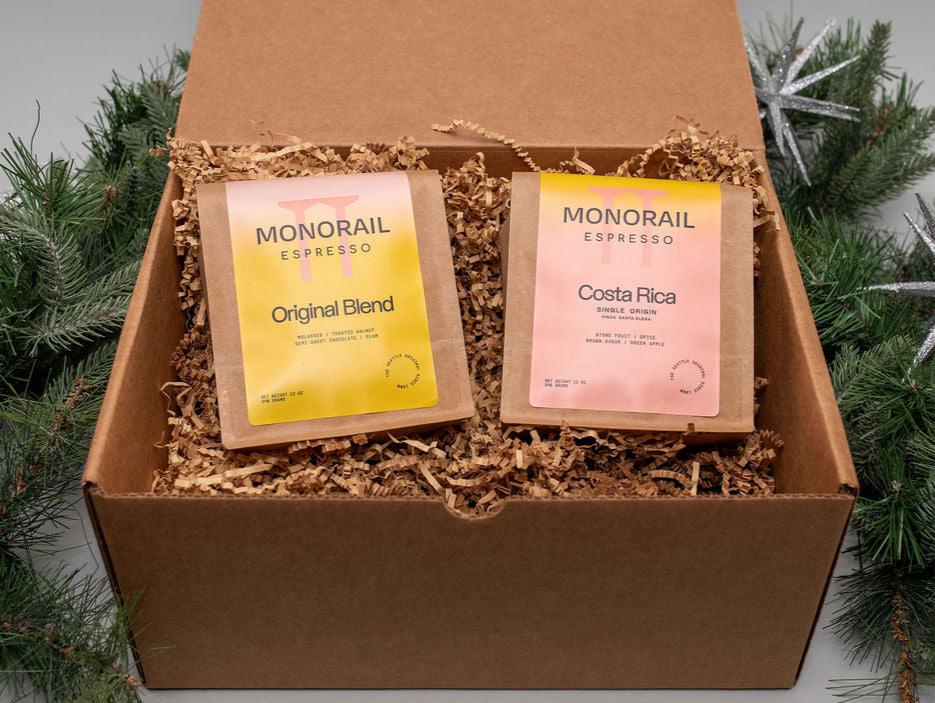Why SOE Single Origin Espresso Is Popular Among Baristas
Wiki Article
Coffee Beans 101: Everything You Need to Know Regarding Coffee and Blended Coffee Beans
When it comes to coffee, recognizing the nuances of coffee and blended beans can transform your daily cup. From the expanding process to roasting methods, every action plays a function in your coffee experience.Understanding Coffee Beans: Kinds and Ranges
When diving right into the world of coffee, comprehending the kinds and ranges of coffee beans is essential for every enthusiast. Arabica beans are recognized for their smooth, complex tastes and reduced caffeine material, making them a preferred amongst coffee connoisseurs.Ethiopian Yirgacheffe provides intense flower notes, while Colombian beans supply a well-balanced flavor profile. By acquainting yourself with these beans and their flavors, you'll raise your coffee experience and make more educated choices in your developing journey.
The Expanding Process: From Seed to Bean
When you discover the journey of coffee, it all beginnings with seed option methods that establish the structure for top quality. From there, cultivation and harvesting play important duties in making sure the beans prosper. Handling approaches transform those collected cherries into the coffee beans you like.Seed Selection Methods
Picking the appropriate seeds is necessary for producing high-grade coffee beans, as it lays the structure for the entire growing procedure. You must begin by selecting seeds from reliable sources that prioritize top quality and genetic variety. Search for ranges understood to flourish in your specific climate and dirt problems. Take notice of the seed's age and storage problems, as fresh seeds tend to germinate better. When possible, choose natural seeds to lessen direct exposure to harmful chemicals. Consider the condition resistance of different varieties, as this can significantly influence your yield. Don't wait to seek advice from with regional farmers or experts to obtain understandings into the finest seed alternatives for your region. This knowledge will enhance your coffee-growing experience.Cultivation and Harvesting
As you support your coffee seeds into thriving plants, comprehending the growing and harvesting process is important for achieving the ideal flavor and quality. Beginning by growing your seeds in well-draining dirt, ideally in a shaded area to shield them from direct sunlight.When it comes time to harvest, search for ripe cherries, which generally turn a vivid red. Hand-picking is frequently the finest method to ensure only the ripest cherries are selected. Timing is essential; gathering prematurely or far too late can affect the taste profile of your beans. Welcome perseverance and care, as this is where top quality starts.

Handling Methods Clarified
When you've collected your coffee cherries, the following essential step is processing them to change those dynamic fruits into the beans you'll make. In the completely dry process, you spread the cherries out in the sun to dry, permitting the fruit to ferment and impart special flavors to the beans. Understanding these techniques is crucial to appreciating your coffee experience.Toasting Techniques: Exactly How Taste Is Created
When it pertains to roasting coffee beans, comprehending roast degrees is key to disclosing their special tastes. Each roasting strategy effects the fragrance and enhances the flavor development process, providing you a richer coffee experience. Let's check out how these aspects integrated to raise your day-to-day mixture.Roast Levels Explained
Roast degrees play an important role in shaping the taste profile of your coffee. By recognizing these levels, you can much better select a coffee that matches your preference choices. Experiment with different roasts to discover which one resonates with you, boosting your total coffee experience and satisfaction.Effect on Scent
The roast level not just influences the taste of your coffee however also substantially impacts its aroma. When you choose a light roast, you'll commonly see bright, floral notes that can make your coffee smell dynamic and fresh. As the beans dim, the fragrance shifts; a tool roast draws out much more well balanced, caramelized scents, while a dark roast tends to include vibrant, great smoky touches. Each toasting technique launches different unstable substances, forming how your coffee scents. In addition, the freshness of the beans plays an essential function; newly roasted coffee releases much more fragrant oils, enhancing that enticing aroma. Pay attention to the roast degree-- it's vital to exposing the complete aromatic experience of your brew.Taste Advancement Process
As you explore the taste growth process, you'll uncover that roasting methods play a crucial role fit the preference profile of your coffee. The roasting temperature level and time directly influence the acidity, sweetness, and bitterness of the beans. Light SOE roasts keep even more of the bean's initial tastes, highlighting floral and fruity notes. Medium roasts balance level of acidity and body, offering an all-around flavor. Dark roasts, on the various other hand, highlight strong, smoky characteristics while decreasing the bean's fundamental qualities. During toasting, chemical reactions, like the Maillard response and caramelization, change the beans and boost their complexity. Exploring with different roasting degrees can help you find your best brew, so do not be reluctant to taste and discover the abundant range of tastes!Espresso vs. Blended Coffee: Key Distinctions
Espresso and blended coffee each offer distinct experiences that deal with various tastes and choices. Coffee is a concentrated coffee made by compeling hot water through finely-ground coffee beans, causing an abundant, bold taste and a velvety layer of crema on the top. It's often taken pleasure in as a shot or made use of as a base for drinks like cappuccinos and cappucinos.On the other hand, mixed coffee combines numerous beans from various areas, developing a much more well balanced flavor account. You'll usually find blends that highlight body, level of acidity, or sweet taste, making them flexible for various brewing techniques. While espresso concentrates on intensity, combined coffee might offer a broader variety of tastes that can alter with each sip.
Ultimately, your option between espresso and mixed coffee come down to your individual preference. Whether you crave a quick shock or a leisurely mug, both options have something delicious to offer.

Brewing Techniques: Opening the Perfect Cup
When it pertains to brewing coffee, finding the right approach can transform your experience and elevate your mug. Each developing method has its unique appeal and can considerably impact your coffee's flavor and aroma. For example, utilizing a French press enables you to delight in a abundant and full-bodied mixture, while a pour-over technique provides a clean, brilliant mug with distinctive flavors.If you like coffee, purchasing a quality machine can aid you understand the art of drawing shots. For benefit, a single-serve capsule system uses rate without compromising taste.
Don't forget regarding chilly mixture, which supplies a smooth, less acidic coffee suitable for hot days. Try out different approaches to uncover what reverberates with your taste. Each developing technique opens a brand-new world of opportunities, so make the effort to check out and find your excellent cup. Delighted brewing!
Sampling Notes: Determining Taste Profiles
Exactly how can you really appreciate your coffee if you don't know what flavors to seek? Sampling notes are your overview to recognizing the complex world of coffee. Pay focus to the preliminary flavors that strike your taste buds when you sip. You might find fruity notes, like berry or citrus, or probably a nutty undertone. As you continue to taste, observe just how the flavors evolve-- this is understood as the "finish." Some coffees might leave a chocolatey or sugar aftertaste, while others may have an intense, tidy surface.Consider the body of the coffee, also; is it light and airy or thick and syrupy? Don't neglect acidity; an intense acidity can add vigor, while a reduced acidity may provide a smoother experience. By determining these taste accounts, you'll grow your link with each cup, making coffee sampling a wonderful trip of discovery.

Tips for Picking and Keeping Coffee Beans
Choosing and storing coffee beans properly can significantly improve your brewing experience. Begin by choosing premium beans that fit your taste - SOE.When you have your beans, store them in a closed container to stop direct exposure to air, wetness, and light. A dark, amazing place works best, so stay clear of maintaining them in the refrigerator or fridge freezer, as this can introduce moisture. Only grind the amount you need to preserve freshness; entire beans retain taste longer than pre-ground coffee.
Finally, attempt to use your beans within two to 4 weeks after opening for peak taste. Complying with these tips will certainly ensure your coffee remains enjoyable and tasty, boosting your day-to-day mixture to brand-new heights.
Frequently Asked Inquiries
How Much Time Do Coffee Beans Keep Fresh After Roasting?
Coffee beans remain fresh for about 2 weeks after toasting - SOE. You should keep them in a closed container, away from light and moisture. Afterwards, their flavor and aroma start to lessen significantly
Can I Mix Different Coffee Bean Varieties?
Definitely, you can mix different coffee bean ranges! Explore blends can enhance tastes and develop an one-of-a-kind taste profile. Simply ensure to stabilize the toughness and features of each range for the very best outcomes.What Is the Suitable Grind Size for Coffee?
For espresso, you'll want a fine work size, concerning the structure of salt. This enables suitable extraction, leading to an abundant, savory shot. Experiment a little bit to discover what fits your taste best!Exactly How Does Altitude Affect Coffee Bean Flavor?
Altitude influences coffee bean flavor by affecting the growth price and chemical structure. Greater elevations lead to slower growth, which enhances level of acidity and complexity, providing your coffee a one-of-a-kind and vivid taste you will not neglect.Exist Decaffeinated Versions of Coffee Beans?
Yes, there are decaffeinated variations of espresso beans. You can take pleasure in an abundant coffee flavor without the caffeine kick. Simply search for "decaf" blends at your regional coffee shop or specialty shop.Coffee Beans 101: Whatever You Need to Know Regarding Espresso and Blended Coffee Beans.
When diving right into the world of coffee, comprehending the types and ranges of coffee beans is important for every enthusiast.When it comes to roasting coffee beans, recognizing roast degrees is essential to disclosing their one-of-a-kind tastes. Espresso is a focused coffee brewed by forcing hot water through finely-ground coffee beans, resulting in a rich, vibrant taste and a creamy layer of crema on top.On the other hand, blended coffee integrates different beans from various areas, producing a much more well balanced taste profile.
Report this wiki page